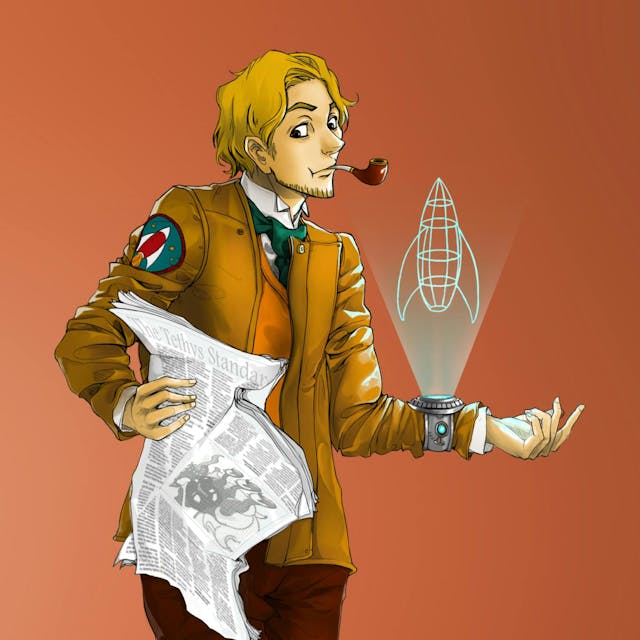Meeting the Gaze of our Latest AI development "PORTRAIT"

In the rapidly evolving landscape of technology, the boundaries between the real and the artificial are becoming increasingly blurred. Here at Rocketmakers, in our quest to be pioneers in our field, we’ve taken a remarkable leap in this direction by creating an AI-powered marvel we call, “PORTRAIT." This creation, which seamlessly combines various AI and AI-assisted technologies, has sparked intriguing observations about human interaction and acceptance of artificial personalities.
What is PORTRAIT?
It’s a 3D representation of a person (or character) that you can talk to in real time. It will talk back. With the personality and knowledge of a real person, living, dead or created.
At the heart of our innovation are components that include.
- Voice and face recognition
- A language generating AI
- A voice cloning engine - if we’re replicating somebody real
- 3D facial design and animation
- A 3D display unit (we’re experimenting with several)
This isn’t a complete list, but the amalgamation results in an interactive 3D entity capable of responding to questions, asking its own, and mirroring the responses in a way that mirrors the nuances of real conversation.
We’ve pushed the boundaries a little by cloning some public figures and our own CEO, Richard, to showcase the potential applications of this technology. Catch us out and about, or visit our office and you can find yourself chatting away to a former US president, the head of a fruit-based technology giant or even a fictional character from a famous novel.
We have showcased PORTRAIT at various events, including Bath Digital Festival and the Bristol Film Festival as well as inviting clients and visitors to have a conversation with it. What's become fascinating for me is the reaction of people who encounter PORTRAIT for the first time. In particular I’ve noticed how a person’s eye contact changes when speaking to our AI ‘talking head’, compared to other, non human humanoids or AI technology.

There is all sorts of research about eye contact between people. When interacting with real individuals, maintaining unwavering eye contact isn't something we normally do outside of our most intimate connections.
In fact I challenge you now to have a face to face interaction with a colleague or friend and fix your gaze on their eyes. Don’t move your eyes away from each other and observe how long it takes before things get weird! This simple experiment leads us to examine some of the social norms and comfort levels in our real human interactions. It is a gentle way of exploring how we question the fine line between connection, intimacy and intrusion. The dynamic of these interactions is put to the test when PORTRAIT comes into play.
Video content, interviews, and even animated characters often draw intense engagement from viewers. We are happy to stare right at them, with no risk of an awkwardly intense connection.
The eerie realism of PORTRAIT creates a paradox however. The absence of a physical presence and the awareness of its artificial nature should ideally deter any discomfort in staring intently at its face. Yet, what transpires is quite the opposite.
My observations reveal that talking to PORTRAIT triggers a curious behaviour. People divert their gaze occasionally to the floor, the ceiling, or the periphery during conversations. This behaviour, mimicking as it does human interactions, raises questions about the psychology of interaction and acceptance.
I’m not suggesting that we’ve crossed the uncanny valley - the gap between humanoid and human that creates feelings of unease - but I feel we are experiencing a significant narrowing; encountering a new horizon of AI acceptance and adoption. If I’m right, it paves the way for further exploration into how such advancements can be harnessed to bridge the gap between human emotion and artificial intelligence.
Rocketmakers’ journey into the realm of AI-powered interactions with PORTRAIT showcases not only the technological prowess of our engineering team, but also the intricacies of human behaviour. The peculiar dynamic of avoiding unwavering eye contact with an artificial entity challenges our preconceived notions and offers a unique lens through which to perceive AI's integration into our lives. As our ‘talking heads’ continue to captivate and challenge observers, it prompts us to reflect on our perceptions and reactions to AI in ways that could redefine our technological future.



